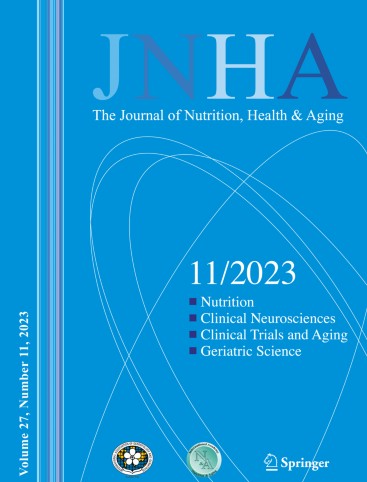监测老年人肌肉功能和体能下降的血浆生物标志物:一项为期2年的纵向研究
IF 4
3区 医学
Q1 GERIATRICS & GERONTOLOGY
引用次数: 0
摘要
诊断和监测肌肉减少症的可靠生物标志物仍然有限,特别是那些反映肌肉健康纵向变化的生物标志物。本研究旨在评估血浆生物标志物与老年人肌肉质量、力量和身体表现的横断面和2年纵向变化之间的关系。方法我们分析了93名参与者的血浆生物标志物(平均年龄74.3岁;88%女性)来自医院纵向队列。使用ELISA对生物标志物进行量化,并对肌肉减少症成分(如肌肉质量、功能和表现)进行多变量回归分析,调整年龄、性别和体重指数(BMI)。结果经调整后,以ALM/height2和ALM/BMI为指标的阑尾瘦质量的基线和2年变化与sleptin水平呈负相关。DHEAS与基线ALM/BMI呈正相关,IL-6与ALM/BMI变化呈负相关。关于肌肉功能,较高的基线握力与肌肉生长抑制素、DHEAS相关,与瘦素和GDF-15呈负相关。对于体力表现,DHEAS和IGF-1与基线SPPB评分呈正相关,而IL-6和GDF-15与之呈负相关。值得注意的是,IL-6也与2年SPPB变化呈正相关。这些发现强调了特定血浆生物标志物在识别肌少症相关功能衰退风险个体以及作为监测老年人肌少症进展的实用工具方面的潜力。本文章由计算机程序翻译,如有差异,请以英文原文为准。
Plasma biomarkers for monitoring muscle function and physical performance decline in older adults: A 2-year longitudinal study
Background
Reliable biomarkers for diagnosing and monitoring sarcopenia remain limited, especially those reflecting longitudinal changes in muscle health. This study aimed to evaluate associations between plasma biomarkers and both cross-sectional and 2-year longitudinal changes in muscle mass, strength, and physical performance in older adults.
Methods
We analyzed plasma biomarkers in 93 participants (mean age: 74.3 years; 88% female) from a hospital-based longitudinal cohort. Biomarkers were quantified using ELISA, and multivariable regression analyses were conducted for sarcopenia components such as muscle mass, function, and performance, adjusting for age, sex, and body mass index (BMI).
Results
Leptin levels were negatively associated with both baseline and 2-year changes in appendicular lean mass indexed by ALM/height2 and ALM/BMI after adjustments. DHEAS positively correlated with the baseline ALM/BMI, and IL-6 negatively correlated with a change in ALM/BMI. Regarding muscle function, higher baseline grip strength was associated with myostatin, DHEAS, and negatively with leptin and GDF-15. For physical performance, DHEAS and IGF-1 were positively associated with SPPB scores at the baseline, while IL-6 and GDF-15 were negatively associated with these. Notably, IL-6 was also positively associated with 2-year SPPB change.
Conclusion
These findings highlight the potential of specific plasma biomarkers to identify individuals at risk of sarcopenia-related functional decline and to serve as practical tools for monitoring sarcopenia progression in older adults.
求助全文
通过发布文献求助,成功后即可免费获取论文全文。
去求助
来源期刊
CiteScore
7.80
自引率
3.40%
发文量
136
审稿时长
4-8 weeks
期刊介绍:
There is increasing scientific and clinical interest in the interactions of nutrition and health as part of the aging process. This interest is due to the important role that nutrition plays throughout the life span. This role affects the growth and development of the body during childhood, affects the risk of acute and chronic diseases, the maintenance of physiological processes and the biological process of aging. A major aim of "The Journal of Nutrition, Health & Aging" is to contribute to the improvement of knowledge regarding the relationships between nutrition and the aging process from birth to old age.

 求助内容:
求助内容: 应助结果提醒方式:
应助结果提醒方式:


